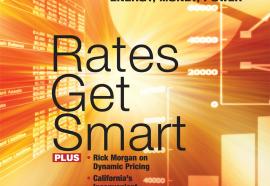Smart Storage
The intelligent grid cannot be achieved without energy storage.
While much has been written about the intelligent grid of late, little attention has been focused on the role of energy storage in achieving its expected benefits. Energy storage is an essential component of the intelligent grid. Energy storage provides greater grid integration of variable renewable energy resource output (e.g., wind, solar); improved system reliability via the provision of grid regulation services; and peak demand reductions and, in turn, deferred capital spending on new and upgraded transmission and distribution assets.











